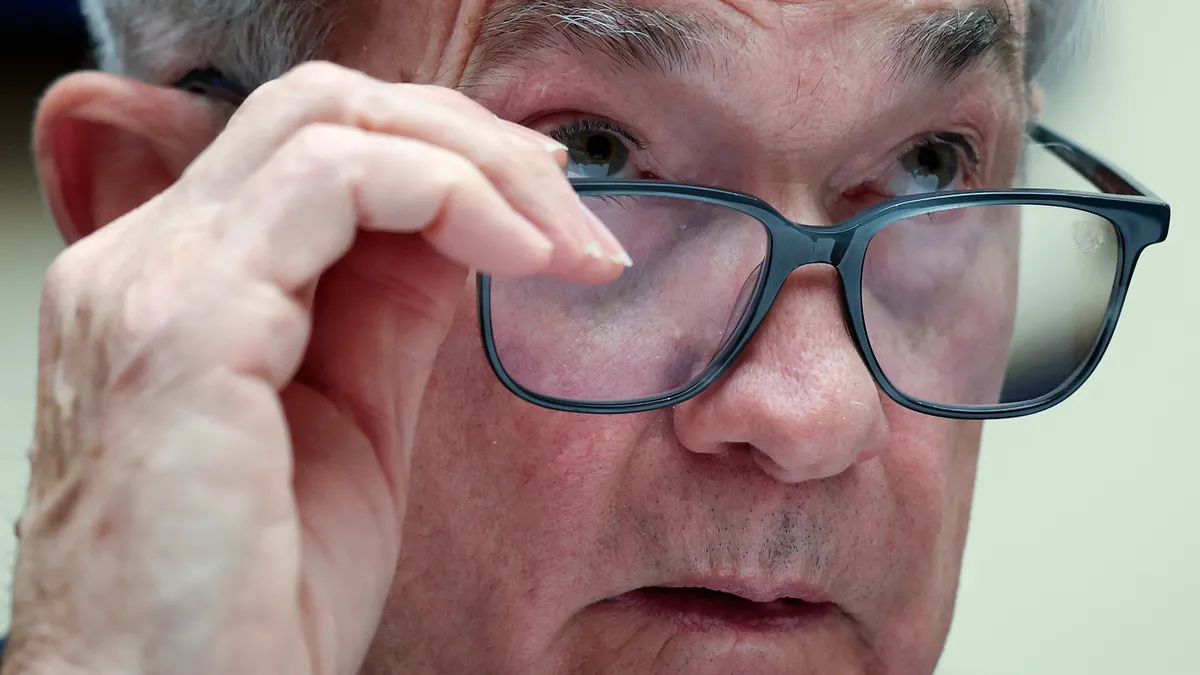Dive Brief:
- Federal Reserve Chair Jerome Powell said Thursday that the central bank “has a long way to go” before determining inflation is fully under control as a tight labor market and higher-than-expected economic growth stoke price pressures.
- “We know that ongoing progress toward our 2% goal is not assured — inflation has given us a few head fakes,” Powell said in a speech. Policymakers “are not confident” that they have raised borrowing costs enough, he said, although they have hiked the federal funds rate since March 2022 to a 22-year high.
- “If it becomes appropriate to tighten policy further, we will not hesitate to do so,” Powell said at the International Monetary Fund in Washington. “We will continue to move carefully, however, allowing us to address both the risk of being misled by a few good months of data and the risk of over-tightening.”
Dive Insight:
Echoing Powell, three other Fed officials Thursday said that the central bank needs to see more signs of easing price pressures before declaring an end to monetary tightening.
“I continue to expect that we will need to increase the federal funds rate further to bring inflation down to our 2% target in a timely way,” Fed Governor Michelle Bowman said in a speech. “We have seen considerable progress on lowering inflation, but inflation remains high and recent readings have been uneven.”
The Fed has slowed price increases by hiking the main interest rate from near zero to a range between 5.25% and 5.5%. Its preferred inflation measure — the core personal consumption expenditures price index — fell in September to 3.7% on an annual basis from 5.5% in September 2022.
Policymakers in two consecutive meetings have held off from hiking the main interest rate. They are next scheduled to gather on Dec. 12-13.
Finishing the job of restoring inflation to 2% will probably require a slowdown, Richmond Fed President Tom Barkin said in comments prepared for a webcast.
“I see that slowing as part of what it takes to bring inflation back to target,” he said. “I just have to believe the net impact of all this tightening will eventually hit the economy harder than it has.”
Economic growth will likely cool as businesses and households face higher borrowing costs, he said, noting that the “benefits from pandemic-era refinancing and debt repayment won’t last long at current interest rates.”
Gross domestic product, defying forecasts of recession, surged at a 4.9% annual pace during the third quarter, largely fueled by a 4% gain in consumer spending, according to the Commerce Department.
“Clearly the U.S. economy has been stronger than expected — it's been more resilient — and this year is just remarkable,” Powell said in response to a question.
Powell predicted 2.5% GDP growth in 2023 and, highlighting strong demand and a tight labor market, said “the process of getting inflation sustainably down to 2% has a long way to go.”
Goldman Sachs, also noting the surprise in growth, sees just a 15% chance of a downturn — a far brighter outlook than the 45% to 55% odds that it set in March.
Inflation will likely cool as GDP growth slows to 2.1% in 2024 from 2.4% this year, Goldman Sachs said in a report.
“We don’t think the last mile of disinflation will be particularly hard,” Goldman Sachs said, predicting that the Fed will reduce the benchmark interest rate during the fourth quarter of 2024.
Atlanta Fed President Raphael Bostic said Thursday the Fed faces an uneven path toward its inflation goal.
“I think our policy is restrictive, and likely sufficiently restrictive, but I think we’re going to still have bumps along the way” before achieving 2% inflation, Bostic said at the Central Bank Business Survey Conference in New Orleans.
“We will keep restrictive policy until that happens or until we are sure that is going to happen,” Bostic said.












